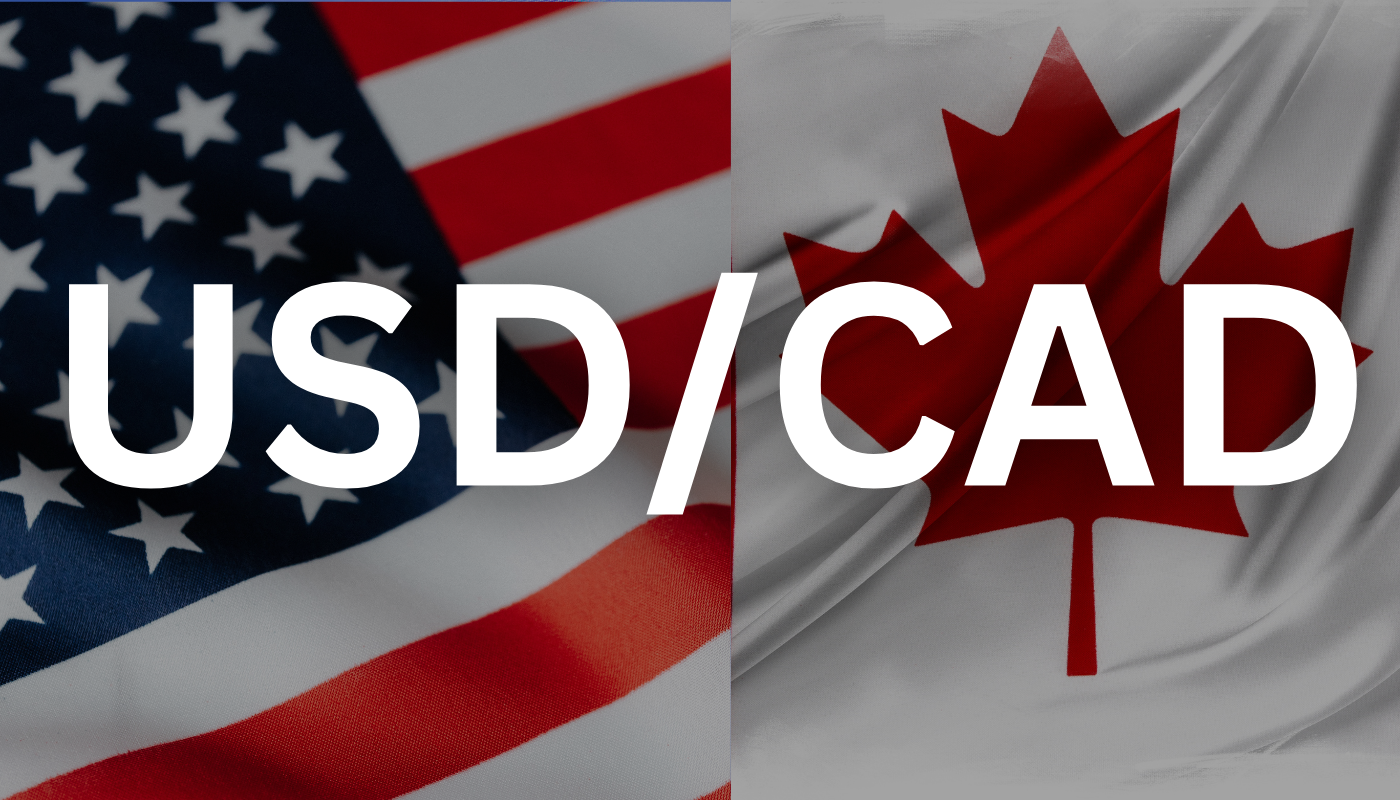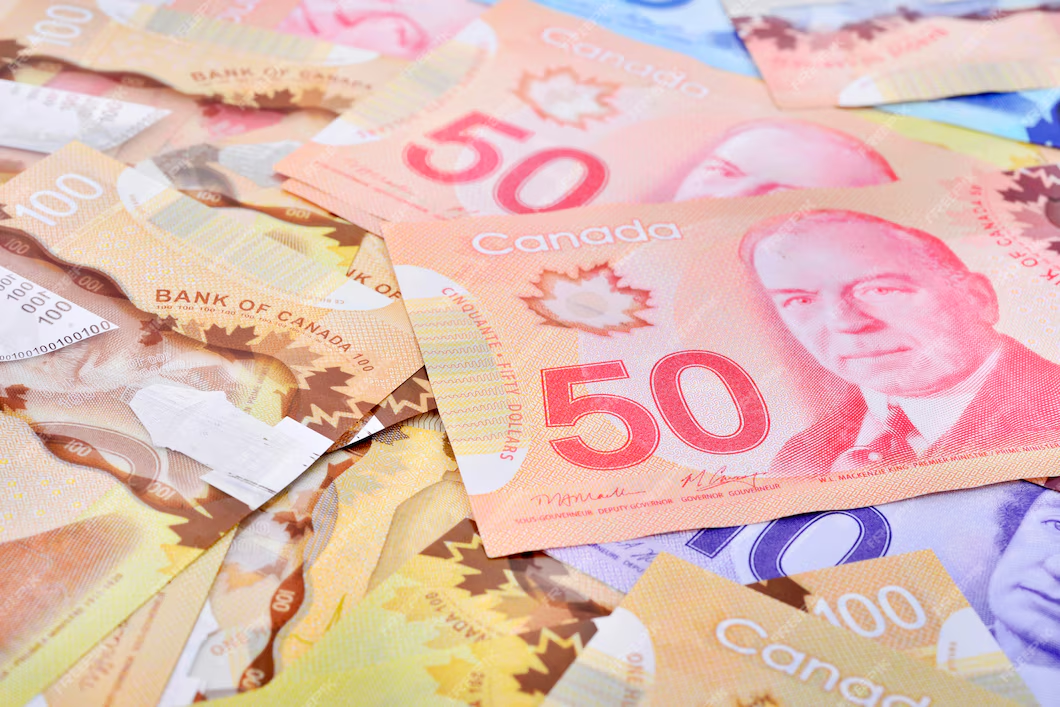USD/CAD Remains Flat Below 1.4350 On Fed Speculation and Canadian Politics
The USD/CAD currency pair begins the week cautiously trading just below the mid-1.4300s as conflicting market signals keep traders and investors nervous. While hopes of an eventual Fed rate cut dampen the US Dollar, lower Crude Oil prices and political instability in Canada—after Prime Minister Mark Carney demanded a snap election—cap the Canadian Dollar’s appreciation. In spite of intraday declines, the pair is still within last week’s range, indicating a lack of direction. With US PMI data and FOMC member speeches coming up, along with volatile oil prices, traders are waiting for new signals to decide the next direction in USD/CAD. KEY LOOKOUTS • Flash PMI prints and comments from prominent Federal Reserve members may steer short-term market sentiment and USD direction. • Short bets on an impending Fed rate-cut cycle are still a dominant force for USD movements and will keep influencing the trend in USD/CAD. • The surprise call for a snap election by Canadian Prime Minister Mark Carney injects uncertainty and could cap any sharp rise in the Canadian Dollar. • As a commodity-based currency, the CAD is still vulnerable to price movements in crude oil, so oil market fundamentals are an essential factor to monitor. Several factors affecting the USD/CAD in the short term need to be monitored closely by traders. Market interest will continue to be on US economic releases, specifically the flash PMI prints and Fed official speeches, which might provide new insights into the central bank’s monetary policy direction. Speculation over a possible Fed rate cut continues to pressure the US Dollar, while political tension in Canada after Prime Minister Mark Carney’s surprise election call might cap Canadian Dollar gains. Also, crude oil price volatility—considering CAD’s high correlation with oil—will be instrumental in determining the pair’s direction. Major areas of focus are future US PMI releases and FOMC speeches, which may influence USD sentiment. Speculation in the market regarding Fed rate cuts and Canada’s surprise election announcement may also impact USD/CAD movement. Also, oil price volatility is still important for the Loonie’s direction. • USD/CAD trades flat below the mid-1.4300s on mixed market signals. • Expectations of a Fed rate cut continue to bear down on the US Dollar. • Dovish Crude Oil prices constrain the Canadian Dollar’s rise. • Political risk increases with Canada’s PM announcing a snap election on April 28. • The market mood remains risk-averse with no definite directional bias. • The market waits for US flash PMI numbers and FOMC member speeches for new indications. • Price volatility in oil will continue to be a primary driver of USD/CAD direction. The USD/CAD pair is stable to start the new week, guided by a combination of economic and political events. Market participants closely monitor the situation unfolding in the US and Canada. On one side, the US Dollar is under pressure as there are growing hopes that the Federal Reserve might have rate cuts in the near term in view of economic slowdown concerns. On the other side, Canada’s political scenario has been given a fresh twist with Prime Minister Mark Carney declaring an unexpected election, raising doubts over future policy and investor sentiment towards the Canadian Dollar. USD/CAD Daily Price Chart Chart Source: TradingView Simultaneously, sentiment across broader markets is subdued as traders consider global economic indicators and geopolitical tensions. The Canadian Dollar, commonly sensitive to commodity prices, is also responding to oil price movements, which significantly determine its relative strength. In the near term, traders are likely to monitor closely the release of US economic data and speeches by Federal Reserve officials, which may provide more insight into the policy direction and its implications for currency movements. TECHNICAL ANALYSIS USD/CAD pair is range-bound, with prices staying just below the mid-1.4300s, indicating a lack of strong directional momentum. The pair has been able to bounce back from initial Asian session lows around 1.4325 but still trades in the wider range set last Friday. In spite of multiple attempts, the pair has failed to break convincingly above the 1.4400 resistance level, which suggests that buyers are reluctant without a definite bullish catalyst. On the negative side, support at the moment is around the 1.4300 level, and a persistent dip below this may draw in new selling interest. Until a break on either side happens, the pair will remain in this tight range, waiting for new impetus from economic news or political events. FORECAST Should market sentiment turn bullish for the US Dollar, perhaps in response to better-than-anticipated US economic news or more aggressive Federal Reserve rhetoric, USD/CAD may try to challenge the 1.4400 resistance level once again. A clear breakout above it may allow for additional upside, particularly if political uncertainty continues to pressure the Canadian Dollar. Also, if the price of oil continues to slide, it will add pressure to the Loonie, thereby supporting the trend in the USD/CAD to the upside. Conversely, in the event of Fed rate cut hopes gaining traction or if disappointing US data come out in the future, the US Dollar is likely to face fresh selling interest, causing USD/CAD to move lower. A drop below the 1.4300 support area may initiate additional weakness towards the 1.4260 or even 1.4200 levels. In addition, any improvement in Canada’s political scenario or a good bounce in crude oil prices might provide support to the Canadian Dollar, raising the risk of decline for the USD/CAD currency pair.












